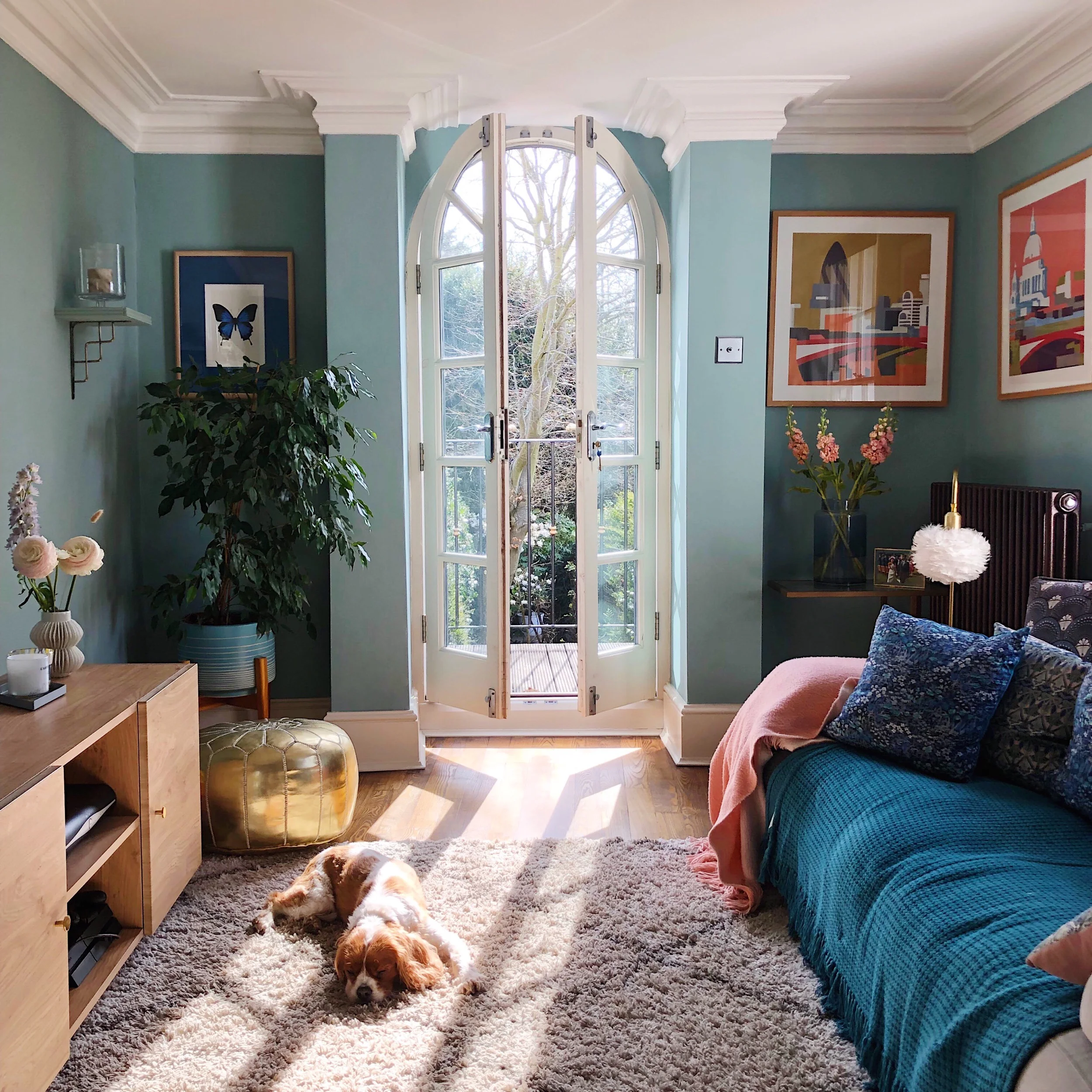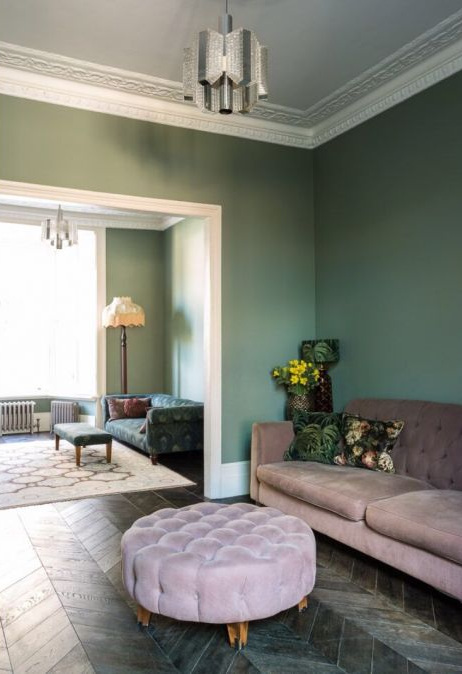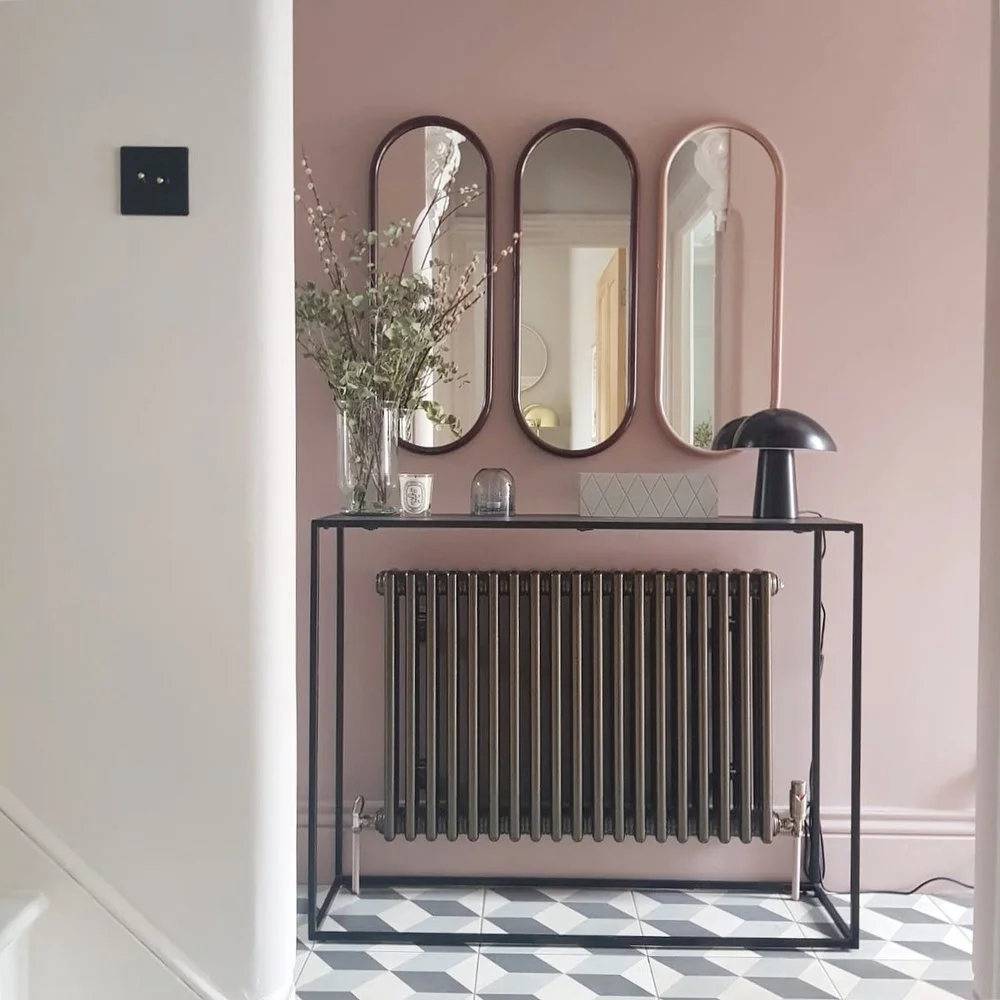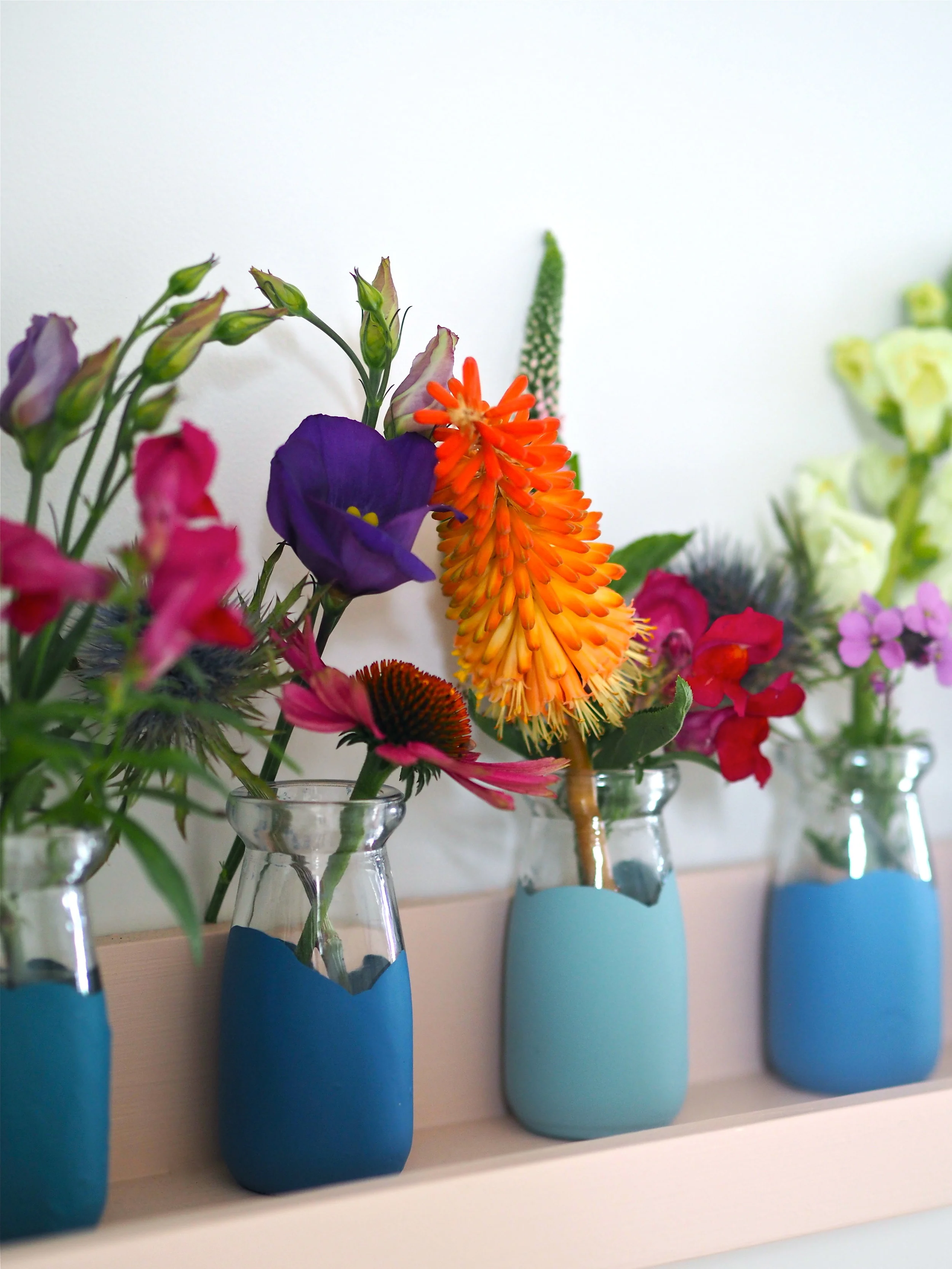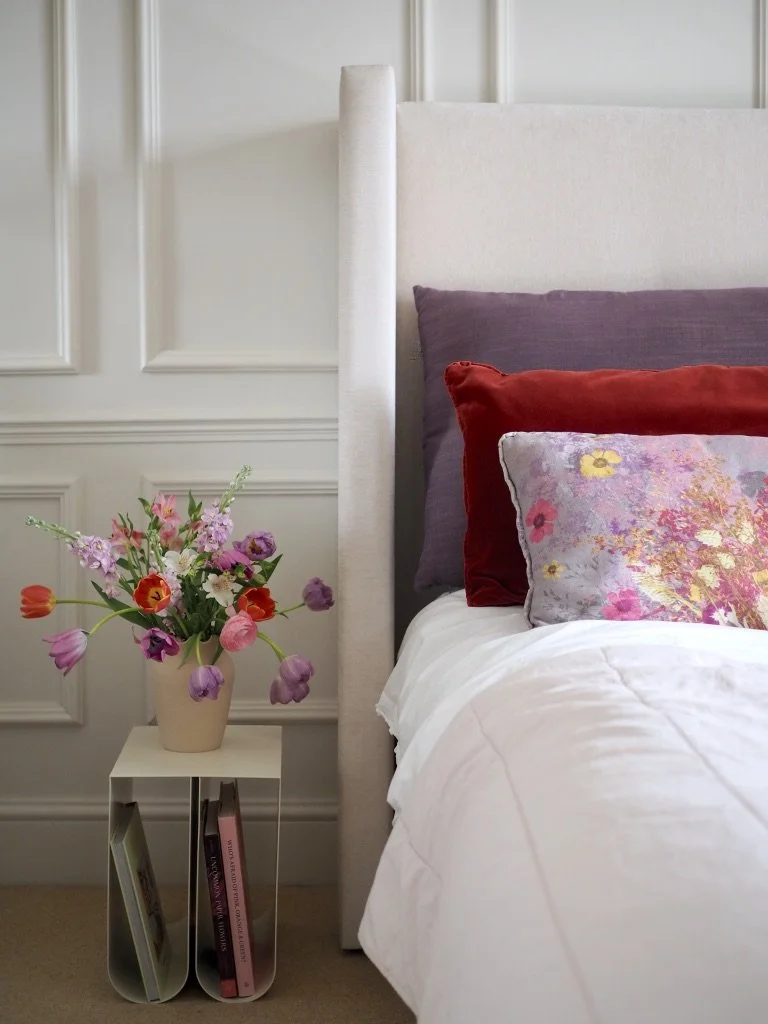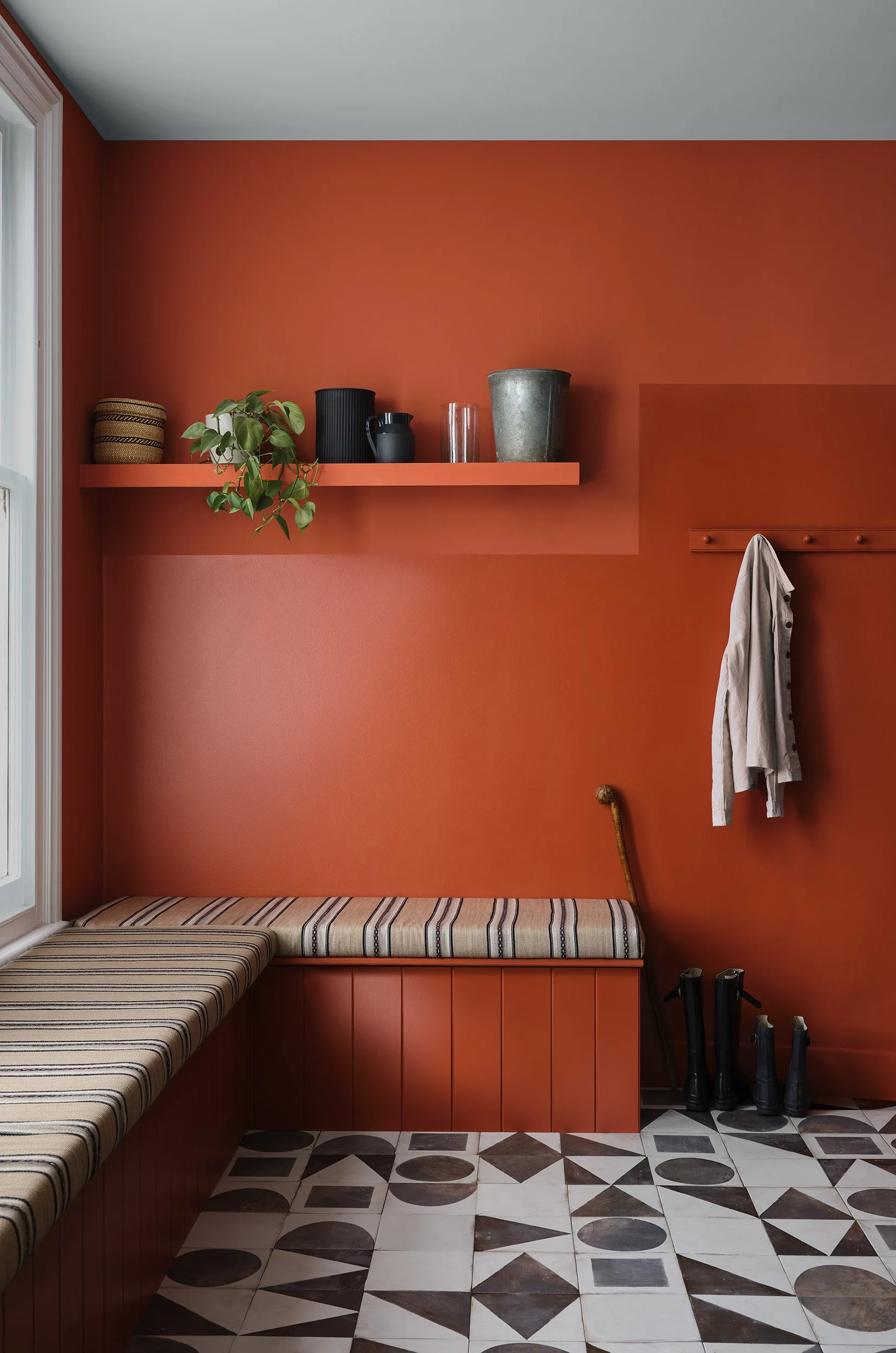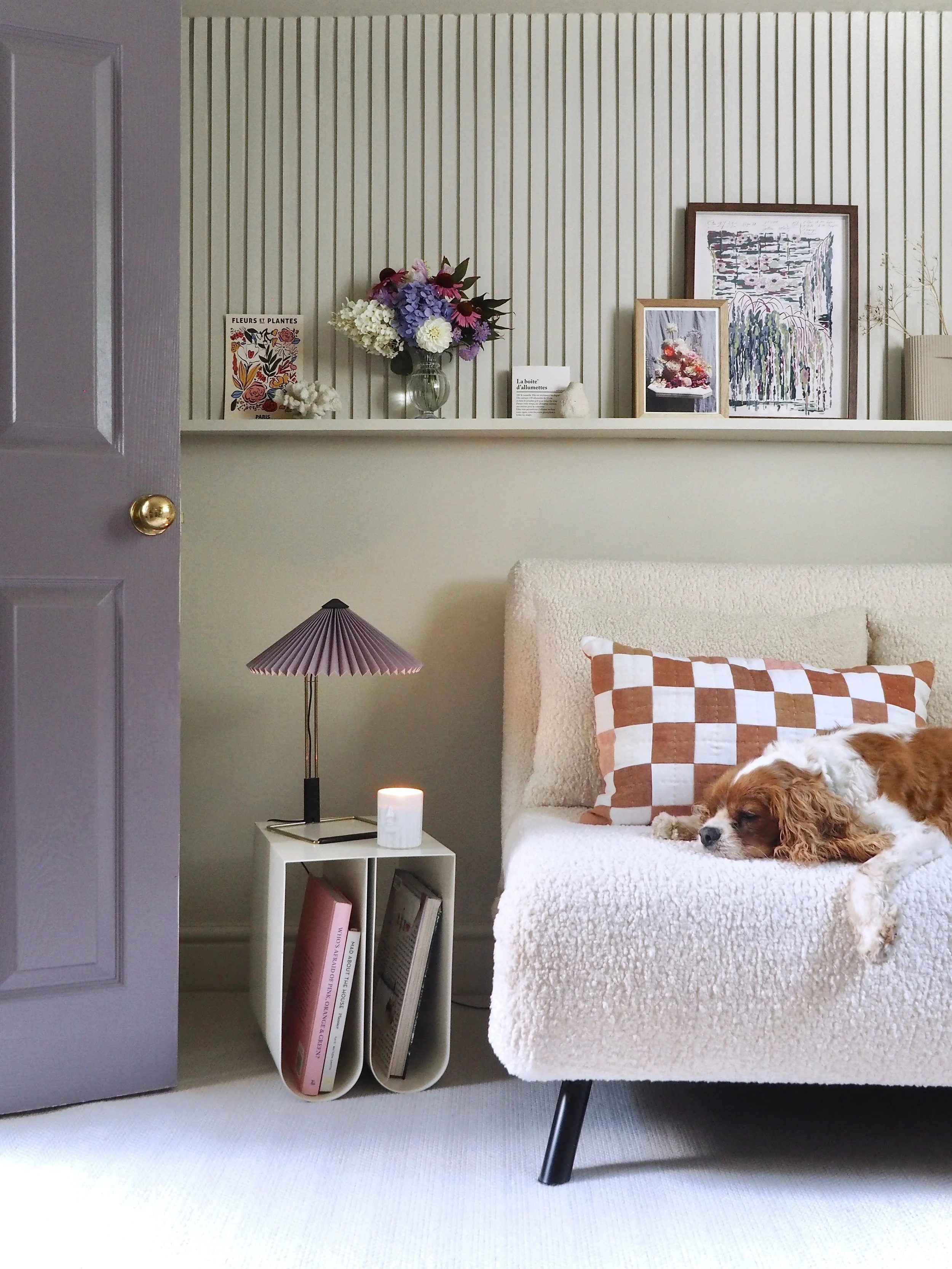How To Pick The Perfect Paint Colour (And Get It Right First Time!)
Choosing the right paint colour for a room is probably one of the hardest decisions to make when you decorate. Colour choice seems endless as the UK alone has over 25 well-known paint brands, whose palettes start at 100 colours, going into the thousands for the larger suppliers. Just how do you pick the perfect hue for your walls without choosing the wrong one? As a self-declared ‘serial decorator’ and a paint obsessive, I’ve spent a lot of time considering colour. Below, I’ve listed my fail-safe method that I always follow to make sure I choose the right shade for my space….
My living room painted in Farrow & Ball Dix Blue, a colour people always ask me about.
If you do not have a set shade that you want to paint your room in, it is a good idea to think about what is going into the room and the room itself, to give you an idea of what paint colours you should be investigating into. Do you have any art that will be going up on the walls? Do you have any existing soft furnishings, such as curtains, that you will not be changing? It’s good to look at these items and think about the colours within them that could with be used as a starting point for your overall colour scheme. Your room needs to feel ‘put together’ and cohesive, so searching for accent colours that inspire or complement is a good way to consider what colour should be going on the walls.
If you are starting your room design from scratch, it is a good idea to think about what colours speak to you and reflect your taste and style. Do you prefer deep, statement emerald tones? Or, more soothing pastel shades? Do you have a Pinterest board full of aspirational rooms? If so, what colours are they mostly painted? It is also important to look at the room as a whole - is it a bright, light room? A room that remains quite dark throughout the day? What will you be using the room for? Is it a working room? A space to relax in? This is crucial to deciding if you should be looking at lighter paint tones or darker ones (and for clarity, paint a small, dark room a darker shade and embrace it; while you should make the most of a bright, light room with a lighter colour.)
Never, ever buy a tin of paint after just looking at the shade on a colour card, or seeing it in someone else’s home on Instagram. Paint colours can look completely different in different rooms, in different lights and at different times of the day. When you buy a tester pot (I’d advise choosing at least five so you can get a feel of the range and depth of each shade) use all the paint inside the tin. Never paint just a stripe or a small area - I would advise painting at least a 30x30cm square so you can really see the colour. I would also not advise painting onto a piece of white paper or card as the paint reacts differently to how it will on the wall (if your existing wall colour is particularly dark or an intense yellow, I would advise giving the room a coat of primer or an undercoat first, so the tester shades are not manipulated by the old paint colour). Apply the paint with a soft paintbrush suitable for tester posts as ‘any old brush’ may apply the paint too thick, leaving a raised mark, and you’ll need to sand back the tester colour before you apply a new full coat. Find the area of the room that gets the most light and the area that gets the least, then paint a large area in both sections as the colour will look different and you might not like one or the other.
I’ve always been obsessed with the wall colours found in Michelle Kelly’s home after seeing it in Living Etc magazine
Never try out a colour and make the decision there and then. Leave the tester colours up on the walls for at least a week, looking at them every time you come into the room at different times of the day, in different lights. You may decide that the colour you thought was ‘the one’ looks awful in the evening light, or you may warm to a different shade once you’ve have adequate time to consider them all.
The perfect shade of pink? Little Greene’s Light Peach Blossom in the home of interior designer Heather Milner.
Hold up homeware items in front of your tester squares that will eventually be placed in the room: cushions, furniture handles, tiles and wallpaper samples are some examples of what will need to work with the wall colour you choose. Look for any particular shade that complements them more than others.
I’ve talked about this in detail in this post here, but you need to choose the right finish for the surface you are painting (plus think about if you want an overly matt or a higher-shine finish.) For a living area or a bedroom that will not see many knocks to the walls, splashes or sticky finger marks, you can choose a flat, matt emulsion. These chalky matt finishes look lovely and really suit a period home, but you can’t wash down the walls if something goes on them. For kitchens, hallways and other hard-working rooms like playrooms, you’ll need an advanced emulsion which is completely durable and washable. For windows, doors, radiators, skirting and trim, you should be looking towards an eggshell finish.
A collection of milk bottles dipped in blue shades by M&L Paints.
Once you have followed this process, chances are that you will pick the colour that is right for you and right for your room. However, do not panic if you start painting and feel overwhelmed that you’ve made the wrong colour choice, or it just doesn’t feel ‘right’! Change takes time to get accustomed to and you will need to get used to the new hue. A bare, empty room in all one shade can also feel imposing, but once you bring in the furniture and the styling elements, it will break up the colour.

